The Trek Slash caused quite a stir when it was launched in 2016 and played a key role in shaping the 29er enduro bike category. Now, Trek have finally presented its successor, the 2021 Trek Slash 9.9 – with more travel, updated geometry and a practical storage compartment. Will this be the new benchmark?
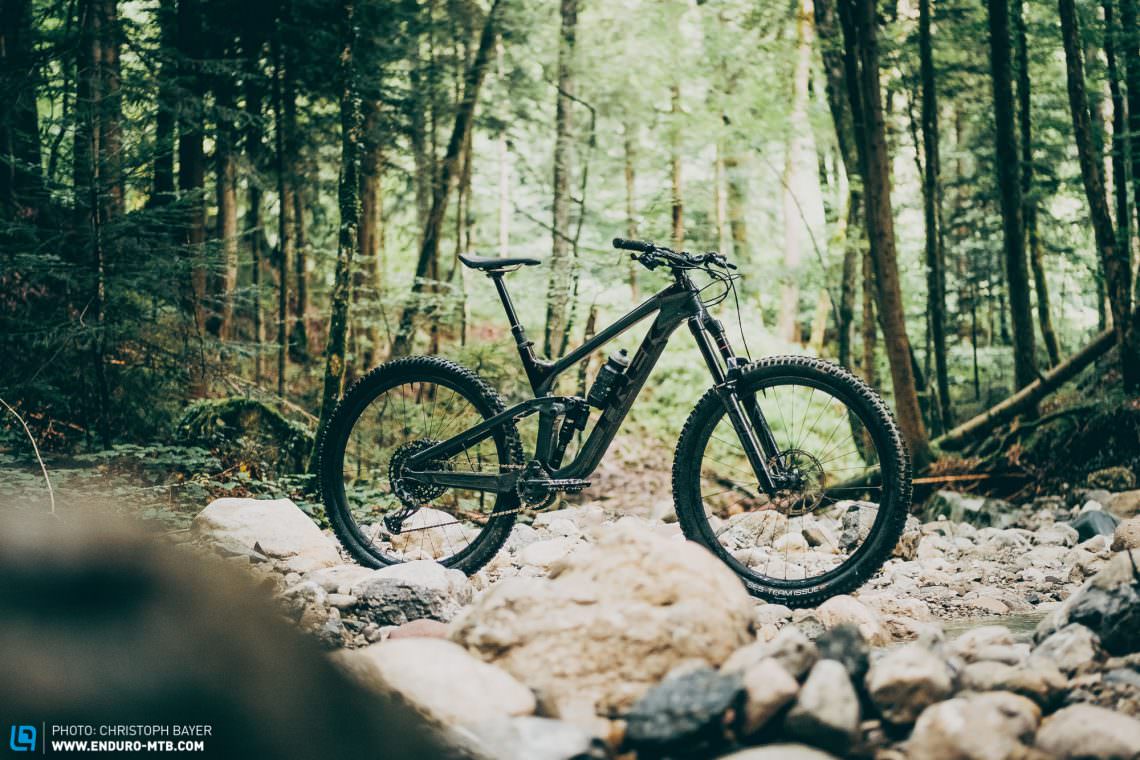
The most important updates of the 2021 Trek Slash in a nutshell
The new Trek Slash has big shoes to fill! Hardly any bike was as popular in the scene as the 29er preceding it, but it was getting on in years. Trek have increased the travel of the new Slash by 10 mm to 170 mm up front and 160 mm at the rear. The geometry has also been fundamentally revised: the reach is longer, the seat tube angle is almost 2° steeper and the head angle is slacker (now 64.1°). The bottom bracket was lowered by a further 6 mm, despite having more travel, bringing the BB drop to 29 mm. As with the Fuel EX, the American brand have equipped the Slash with a storage compartment in the down tube of both the carbon and aluminium frames.

Looks like a … Trek! There’s no denying the new Slash’s heritage.
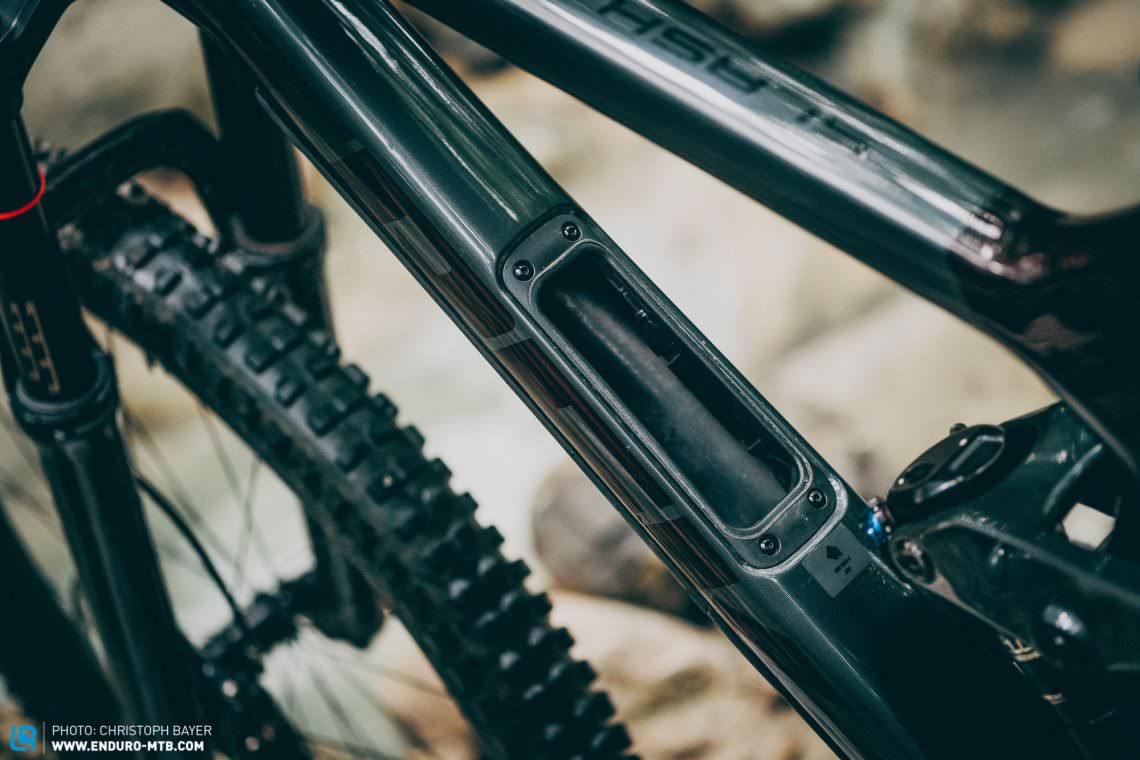
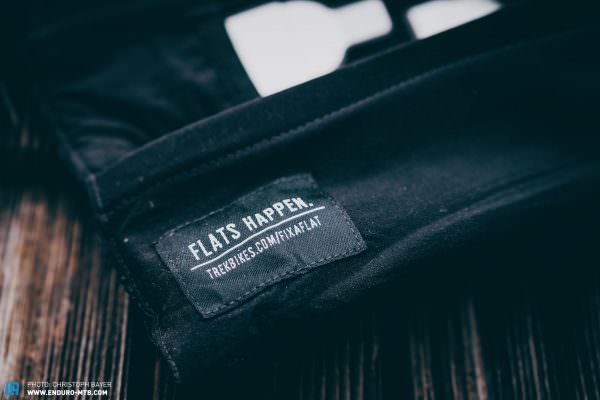
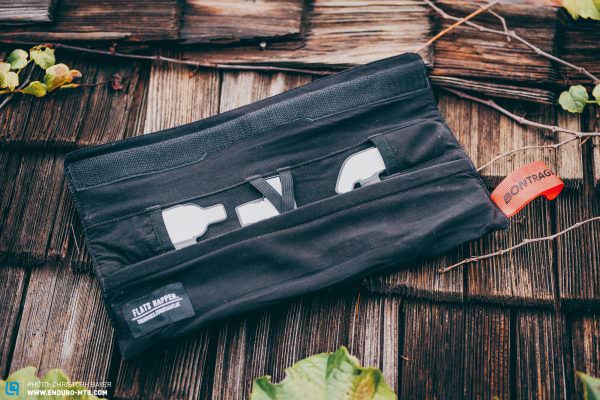
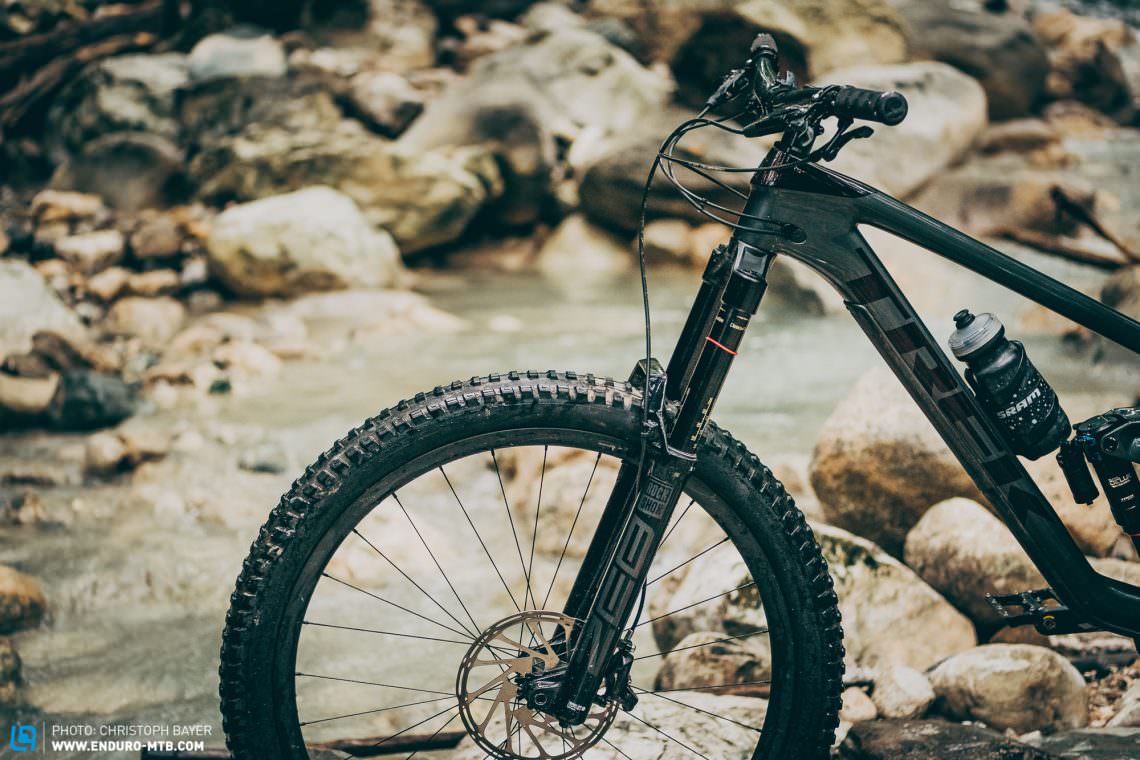
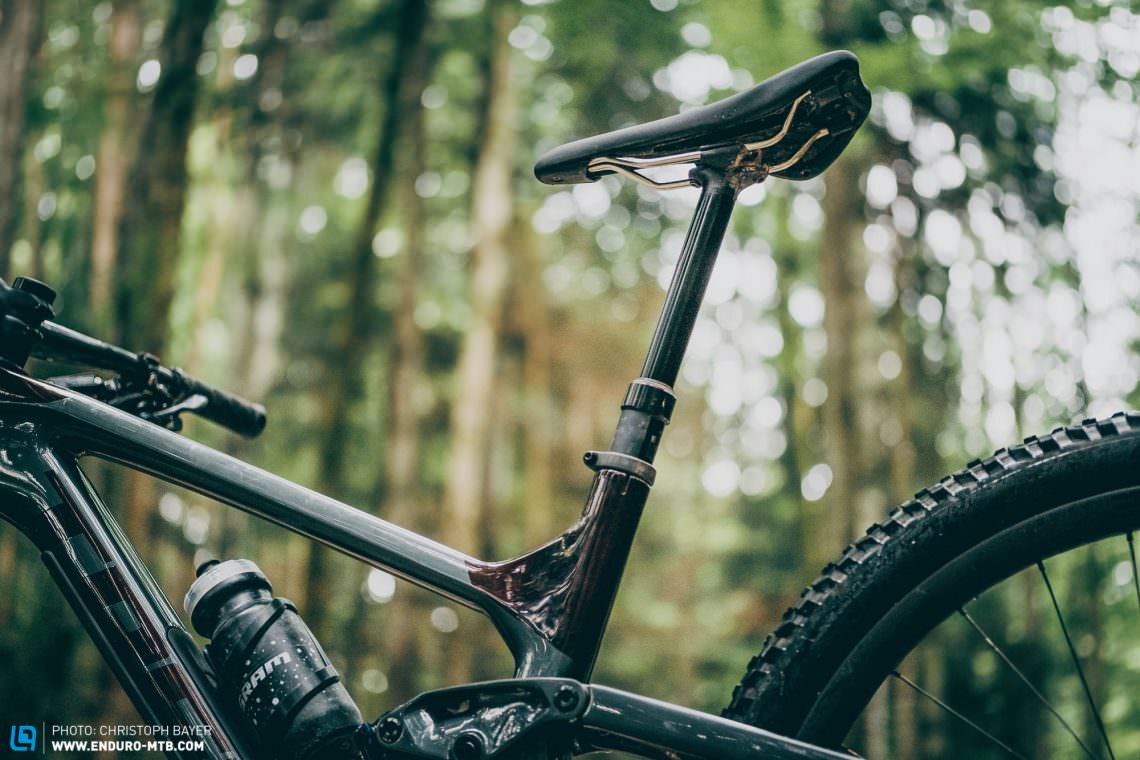
Trek have also improved many details of the Slash, giving the bike a new Thru Shaft Super Deluxe shock specially made by RockShox, a revised Knock Block that doesn’t limit the steering quite as much, a threaded bottom bracket and bigger frame protectors. On top of that, the new Trek Slash comes with a 34.9 mm dropper post offering up to 200 mm of travel.
The changes made to the 2021 Trek Slash at a glance:
- longer and slacker geometry with a steeper seat tube angle
- more travel – 170 mm at the front, 160 mm at the rear
- convenient storage compartment in the down tube (aluminium and carbon frames)
- revised Knock Block offering a wider steering angle (72° instead of 58°)
- Specially developed Super Deluxe shock with Thru Shaft technology
- bigger frame protectors
- 34.9 mm dropper post with up to 200 mm travel
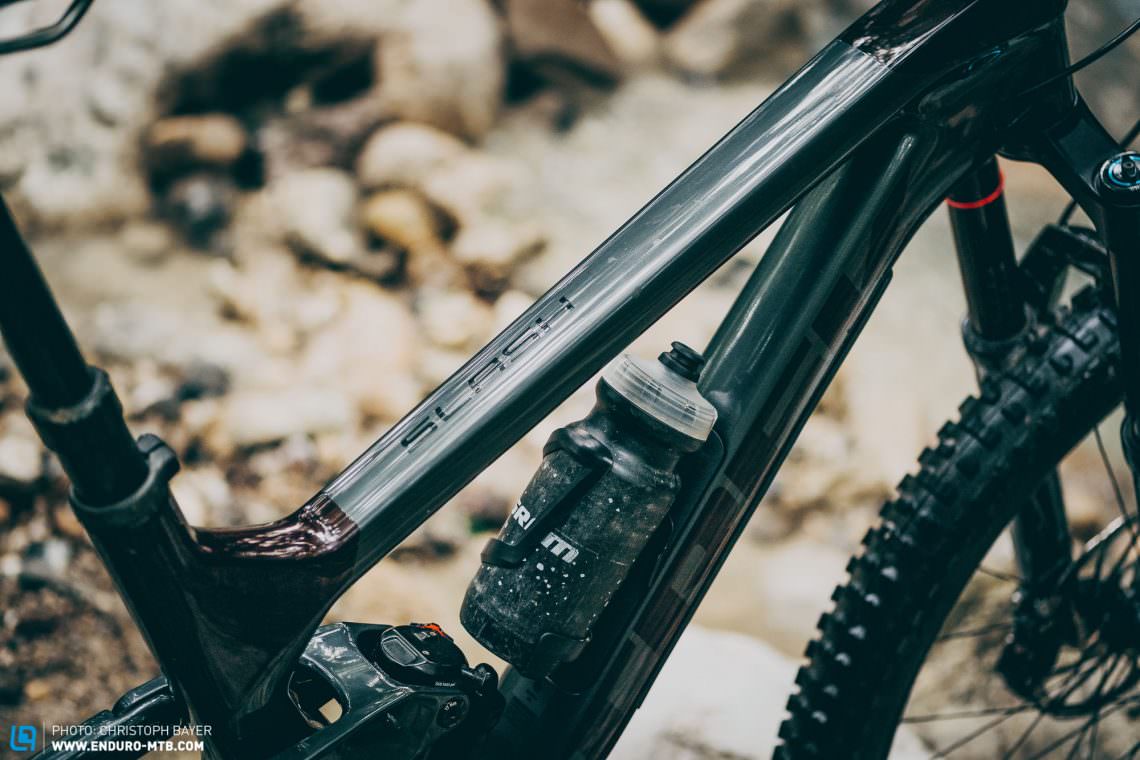
The frame of the 2021 Trek Slash in detail
Like its predecessor, the new Trek Slash is available as an aluminium or carbon version. The kinematics and geometry of both versions are identical. Trek are also the first company to integrate the practical storage compartment in the down tube on an aluminium frame – awesome! Like its predecessor, the rear linkage of the new Slash also pivots on the rear axle. As such, the rear suspension should remain active while braking. Trek also continue to rely on their so-called Mino-Link on the new model, allowing you to adjust the geometry by around 0.5° and the bottom bracket height by 6 mm – but we don’t know of anyone who actually uses it. We only ever rode the old and the new Slash in the slack setting.
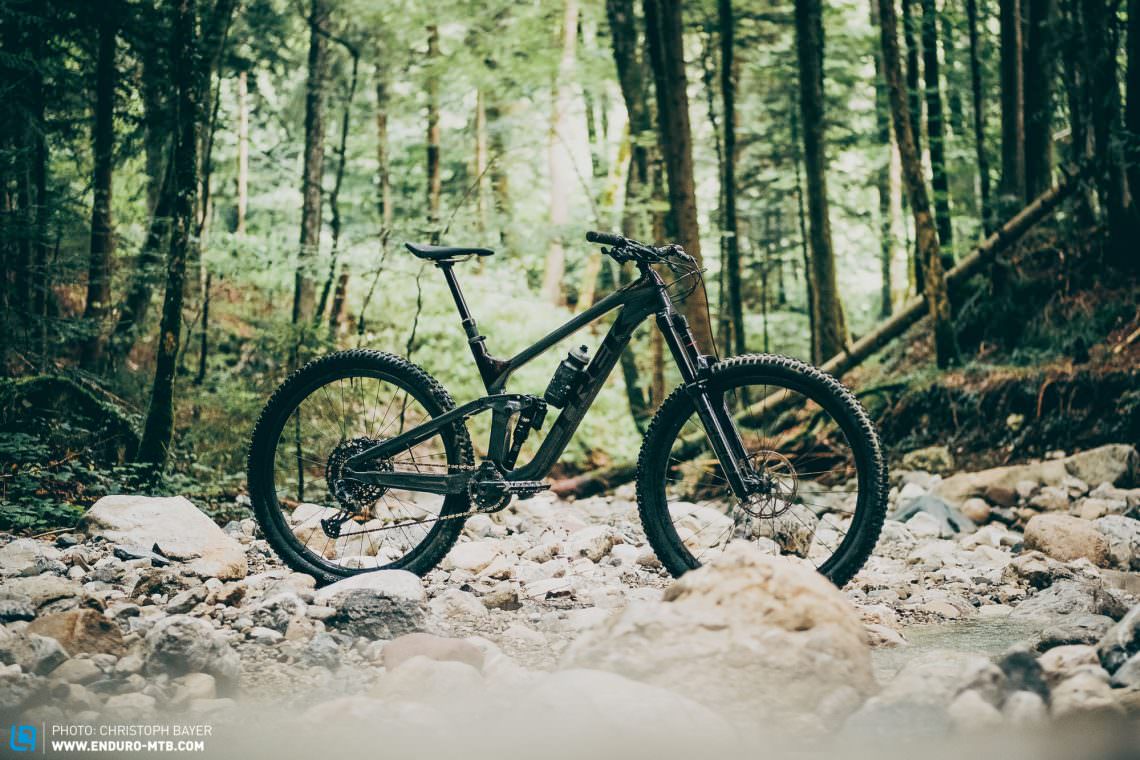

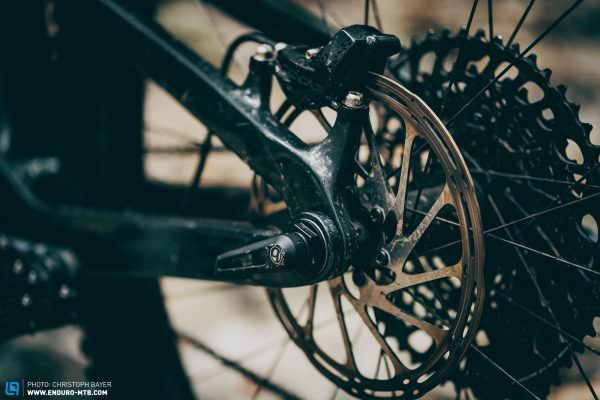
The Thru Shaft technology on the shock already proved itself on the predecessor, which creates less internal friction thanks to the continuous shaft and the lack of IFP and its seals. For the new model, Trek worked with RockShox to improve on this technology. Instead of using a specially manufactured body, it is now based on the Super Deluxe which allows you to adjust low-speed compression in three stages and thus tune the bike to suit different trails. Flow trails = more compression; steep natural trails = less compression. Another update is that the rebound clicks are now numbered, making it much easier to play with the setup. If you’d prefer using a different shock on the Slash, you can do so without any problems. Most 230 x 62.5 mm Trunnion mount shocks should fit into the rear triangle (e.g. FOX DHX2, FOX X2, RockShox Super Deluxe Coil, FOX DPX2 and MRP Hazard). According to Trek, the Slash is also compatible with coil shocks. The only shock that won’t fit is the classic Super Deluxe air shock because of the position of the lockout lever. Despite having longer travel, Trek have managed to retain the kinematics of the previous Slash, only increasing the overall progression by 2%.
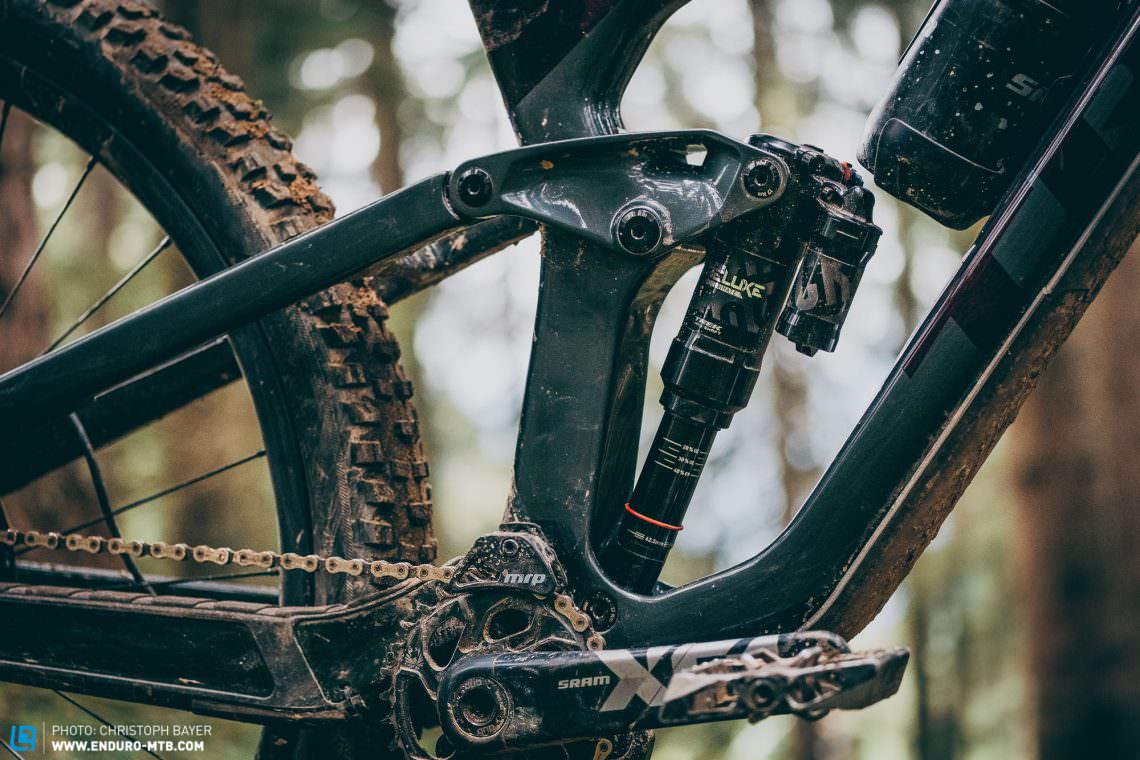
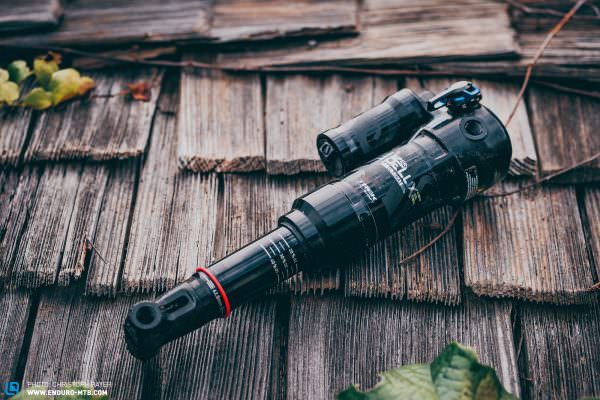
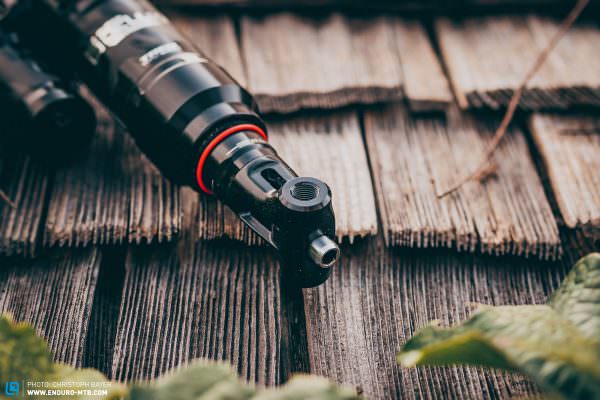
Trek have reworked the details too, equipping the Slash with a threaded BSA bottom bracket, which is much easier to replace than a press-fit version. The down tube protector has been lengthened, but it can also be split in two to save weight, though we wouldn’t know who would want to do that. The cables are routed internally and are secured in place at two positions in the storage compartment, negating the need for foam sleeves or dedicated cable channels inside the frame. Trek have also designed the new Slash to accommodate longer dropper posts, speccing a 200 mm travel Bontrager model on the XL bike. Size L comes with a 170 mm version, while sizes ML and M are fitted with 150 mm travel posts. The smallest size S gets a 125 mm model. The travel of the dropper post can be reduced with spacers if need be.
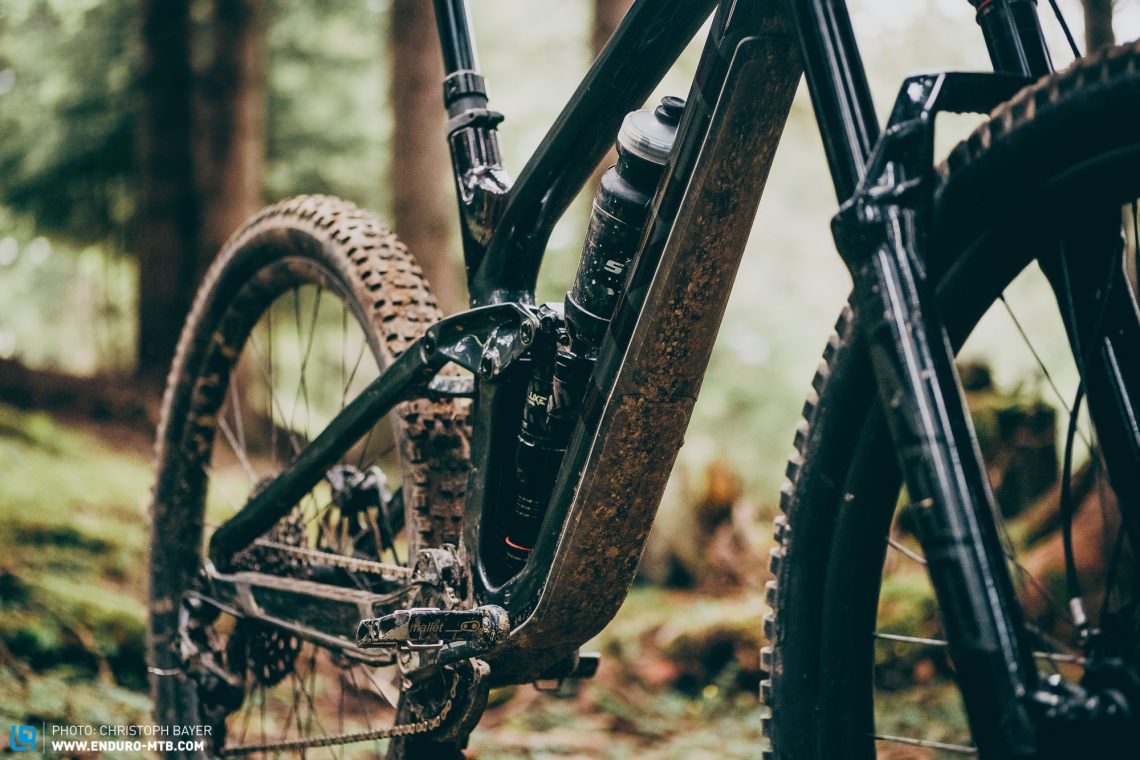
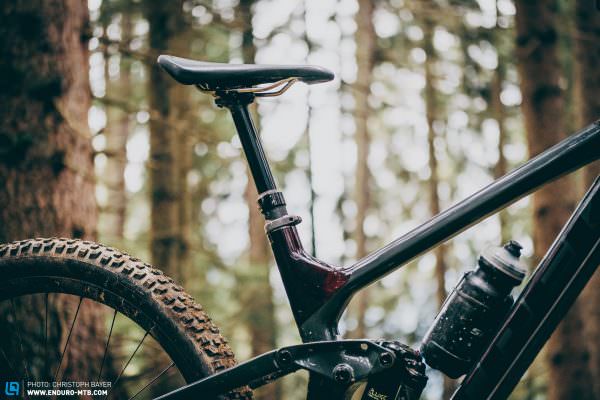
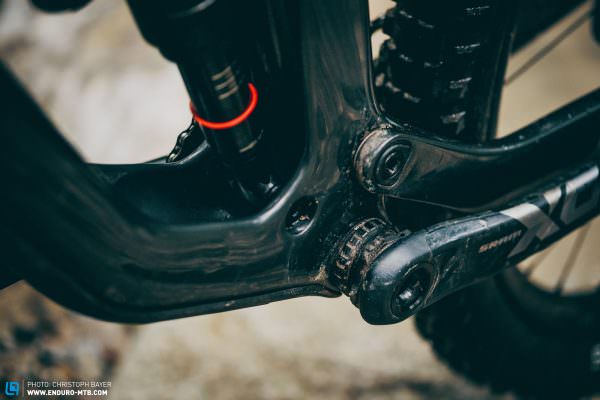
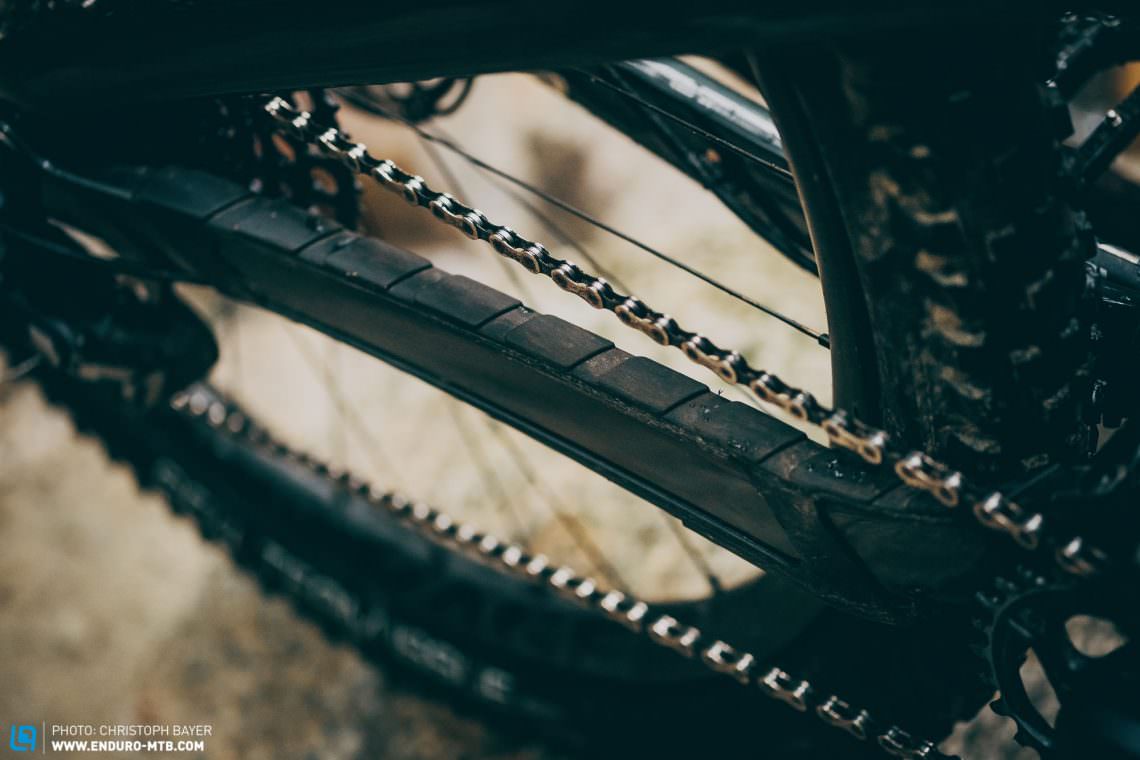
For the rear end, Trek continue to rely on the established 148 mm Boost standard that they introduced. To increase the clearance around the chainring, they choose to fit the latest SRAM or Shimano cranks with a 55 mm chain line. We wrote a separate article explaining why we think the new Super Boost Plus standard makes little sense, so we’re glad that Trek didn’t go down that route.
An analysis of the Slash’s geometry
You can tell the age of the previous Slash by its short reach and the very slack seat tube angle. Trek have updated both of these aspects on the new model. In size L, the new bike has a reach of 486 mm, 33 mm longer than previously. The chainstays have only increased by 2 mm to 437 mm. The seat tube angle has been made 1.9° steeper, but at 75.6° it’s still pretty slack by today’s standards, especially as the effective angle slackens the further the dropper post is extended. The bottom bracket is lower than its predecessor too, but the 29 mm drop isn’t extreme. The intermediate ML size, on the other hand, is an excellent addition as it will make things much easier for all those riders who find themselves between two frame sizes. In general, we like that Trek is offering the Slash in five sizes, thus making an optimal fit available to as many riders as possible.
The geometry at a glance:
| Size | S | M | ML | L | XL |
|---|---|---|---|---|---|
| Seat tube | 395 mm | 420 mm | 435 mm | 450 mm | 500 mm |
| Top tube | 585 mm | 610 mm | 629 mm | 649 mm | 684 mm |
| Head tube | 100 mm | 100 mm | 105 mm | 115 mm | 140 mm |
| Head angle | 64.1° | 64.1° | 64.1° | 64.1° | 64.1° |
| Seat angle | 75.6° | 75.6° | 75.6° | 75.6° | 75.6° |
| Chainstay | 437 mm | 437 mm | 437 mm | 437 mm | 437 mm |
| BB Height | 345 mm | 345 mm | 345 mm | 345 mm | 345 mm |
| Wheelbase | 1197 mm | 1222 mm | 1243 mm | 1264 mm | 1305 mm |
| Reach | 425 mm | 450 mm | 469 mm | 486 mm | 516 mm |
| Stack | 621 mm | 622 mm | 626 mm | 635 mm | 658 mm |
An overview of the various Slash models
Trek are offering the new Slash in two aluminium models and three carbon versions. The 9.8 and 9.9 carbon models are further split between versions with a SRAM or a Shimano drivetrain and different colours, including a completely customised paint job thanks to Trek’s Project One concept. Pricing for the new range starts at € 2,999 for the Slash 7. However, the most attractive model for most riders will be the € 3,499 aluminium Slash 8, which leaves little to be desired in terms of its components. The most affordable carbon Slash is the 9.7, retailing for € 4,499. Topping the range is the 9.9 XTR Project One bike for € 9,099. Both the carbon and aluminium frames are available separately for € 3,999 and € 2,499, respectively. Compared to the complete bikes, this doesn’t seem like a very sensible option for most buyers.
A brief introduction of the different models
Trek Slash 7 – your entry into the range – € 2,999
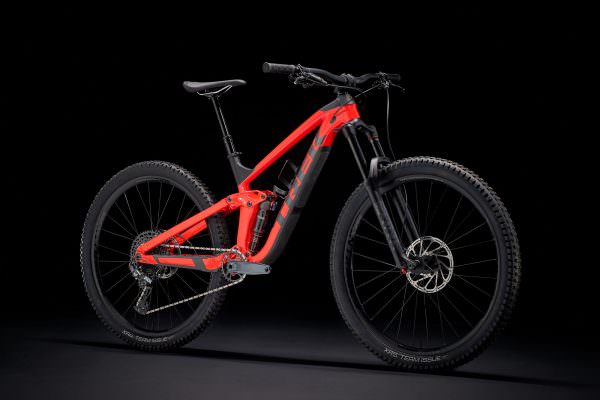
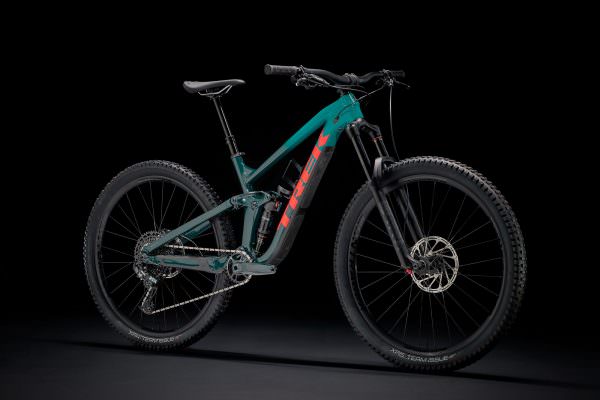
At € 2,999, the Trek Slash 7 is the most affordable model. It comes with a RockShox Yari fork, a Deluxe Select+ shock without a reservoir, an NX Eagle drivetrain, and weak Guide T brakes. Both the suspension and the brakes are compromised and we would recommend paying € 500 more for the Slash 8.
Trek Slash 8 – great value for money – € 3,499

It sounds almost too good to be true – for just € 500 more, the Slash 8 comes with a RockShox Lyrik RC fork, a Super Deluxe Ultimate shock, a GX-Eagle drivetrain and the powerful SRAM CODE R brakes! Functionally, there is nothing to complain about on this bike. Anyone looking for an attractively priced enduro bike to hit the trails at full speed should take a closer look at this model.
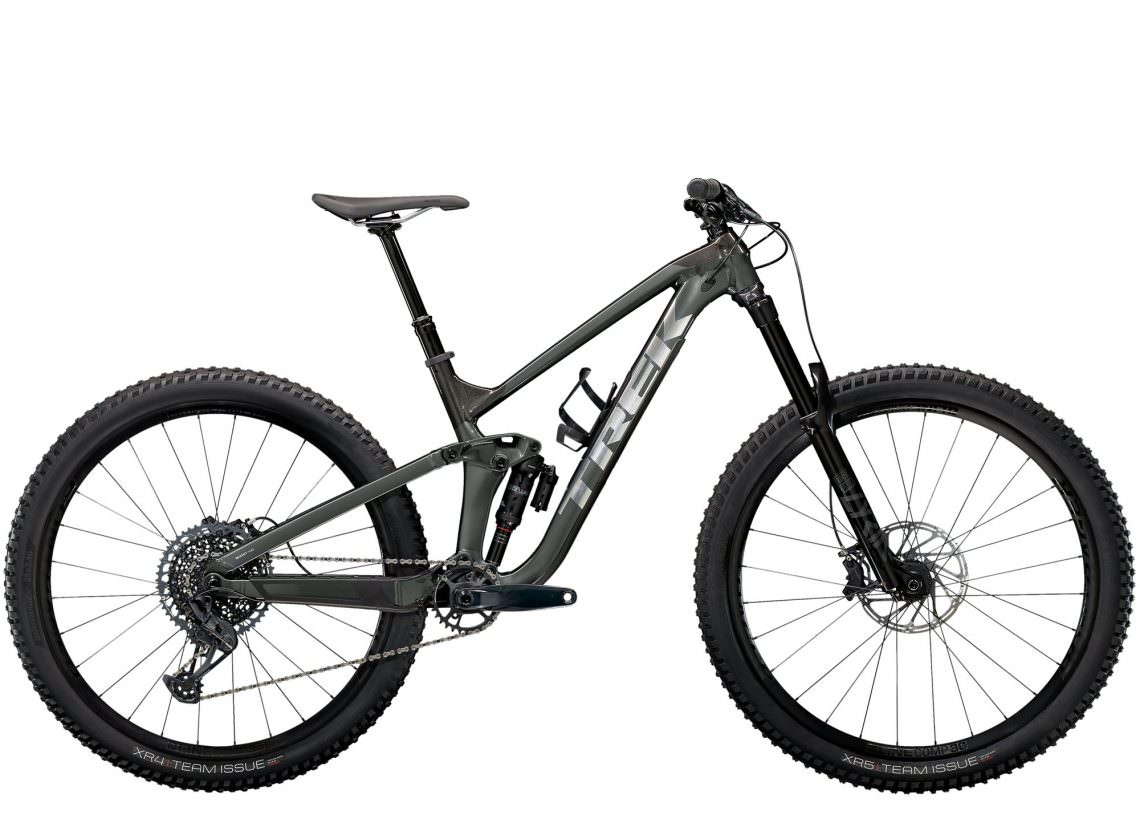
Trek Slash 9.7 – your entry into the world of carbon – € 4,499
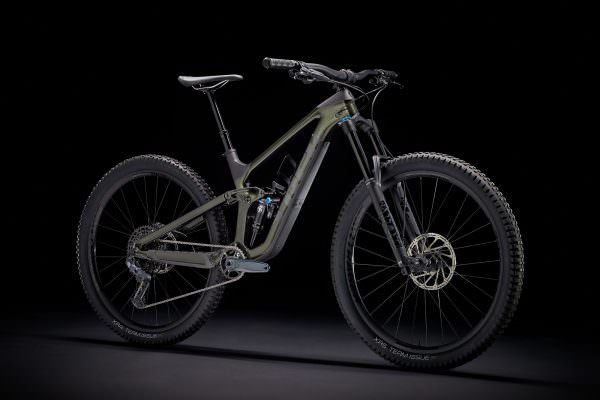

The Slash 9.7 is the only model in the lineup equipped with FOX suspension. It comes with a 36 Rhythm fork and a DPX2 shock. Shifting is taken care of by SRAM NX and GX components and a pair of SRAM CODE R brakes provide the stopping power. There is nothing to complain about on the bike, but we would personally save ourselves the additional € 1,000 for the carbon frame and spend the money on slight upgrades for the Slash 8 instead.
Trek Slash 9.8 XT or GX – available in Project One on request – from € 5,999

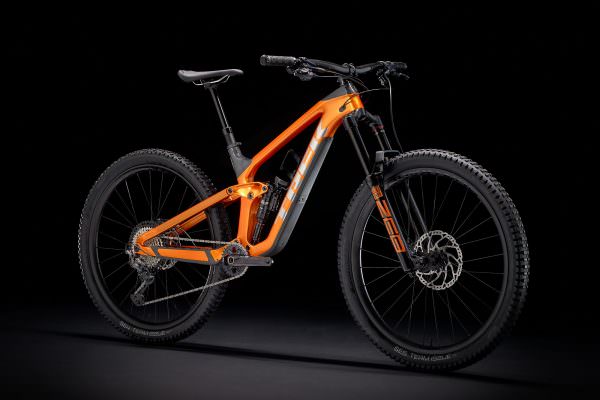
The Slash 9.8 is the most affordable model available in Trek’s Project One range. For a surcharge of € 500 or more, you can get a completely custom paint job. It comes either with a SRAM GX or Shimano XT drivetrain. The SRAM variant is paired with G2 brakes while the Shimano model is specced with a pair of SLX four-piston brakes. We would choose the Shimano option for the brakes. Both models feature Bontrager Line Elite carbon wheels. The suspension is taken care of by a RockShox ZEB Select+ fork and the specially developed Super Deluxe Ultimate shock. In our opinion, if you must have a carbon frame, this is the model to go for.
Trek Slash 9.9 X01 or XTR – also available in Project One on request – from € 8,499
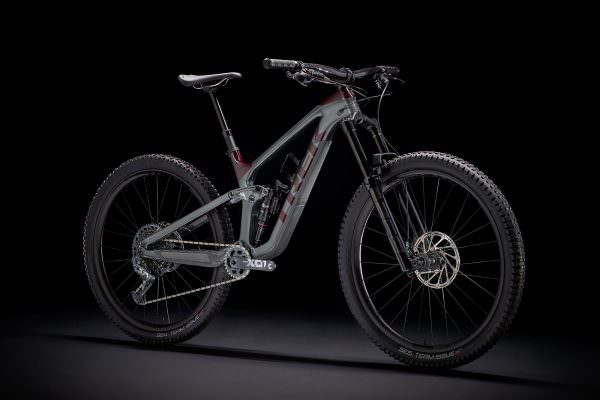

You only want the best? Then you should choose the Trek Slash 9.9. The bike is optionally available with a SRAM X01 or Shimano XTR drivetrain and can be completely customised as part of the Project One concept. The bike’s handlebars, as well as the Bontrager Line Elite wheels, are made of carbon. The suspension consists of a ZEB Ultimate fork and a Super Deluxe Ultimate shock. From a rational point of view, the extra charge compared to the Slash 9.8 simply isn’t worth it – but who of us is rational when buying a bike?
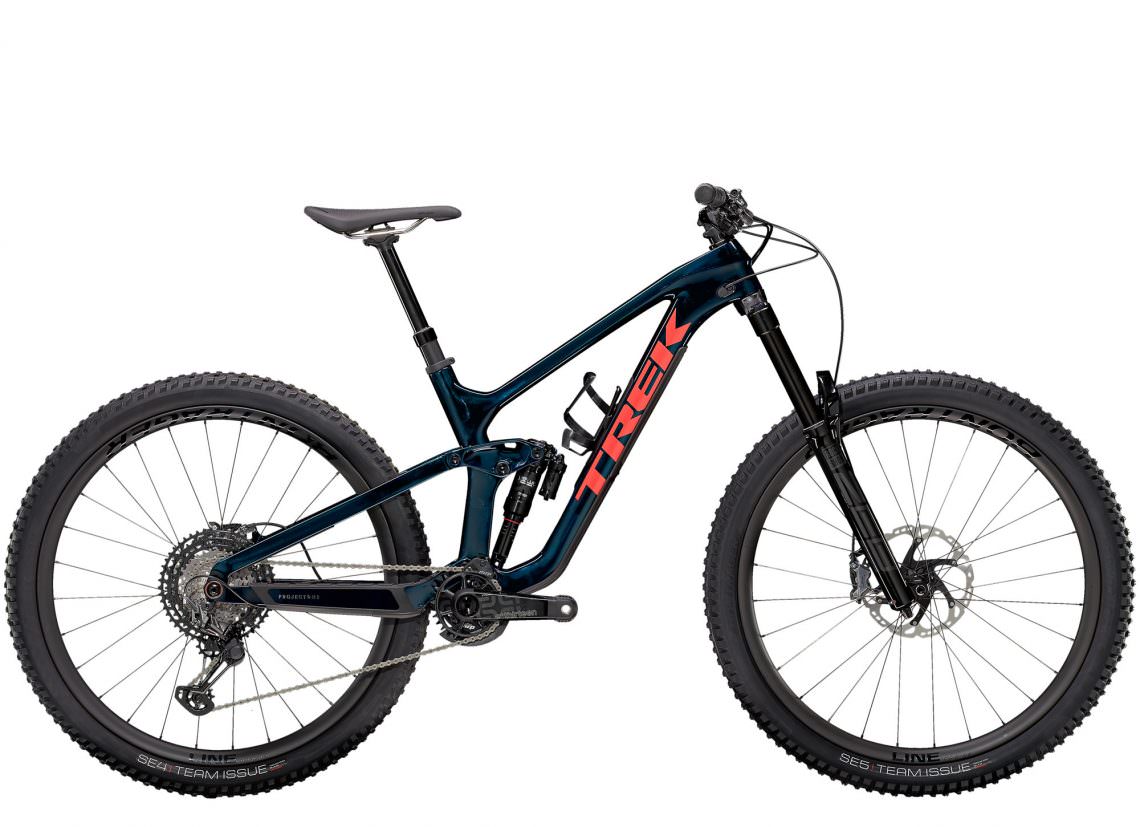
Our review of the new 2021 Trek Slash 9.9 X01 enduro bike
More than six weeks before the official launch of the new 2021 Trek Slash, we were lucky enough to do an in-depth review of the flagship 9.9 X01 model in size L. Besides riding the bike on our home trails, as usual, we also took it to the bike park in Innsbruck. As if that wasn’t enough, we included it in our enduro bike group test, which will be published in the next issue, comparing it to the hottest enduro bikes of the year. In total, the new Slash 9.9 XO1 was ridden by five experienced ENDURO test pilots.



At first glance, the new Slash looks a lot like its predecessor. However, the frame is generally beefier. As soon as you climb aboard, you’ll immediately notice a few differences. The bike is longer, the seat tube angle is steeper and the suspension feels plusher. The riding position is comfortable, neither too stretched nor too upright. However, the seat tube angle remains on the slacker side of the spectrum. Long-legged riders or anyone who regularly attempts very steep climbs will have to push the saddle as far forward as possible. By doing so, we were able to find a suitable climbing position. Riding uphill, the rear suspension is as pleasantly efficient as before, as long as you stay seated and pedal in even strokes. If that’s the case, you can leave the shock open without any problems. However, if you have to get up out of the saddle to pedal, we recommend locking out the shock first. Overall, the Slash is a capable climber and will easily get you to the top of every trailhead.
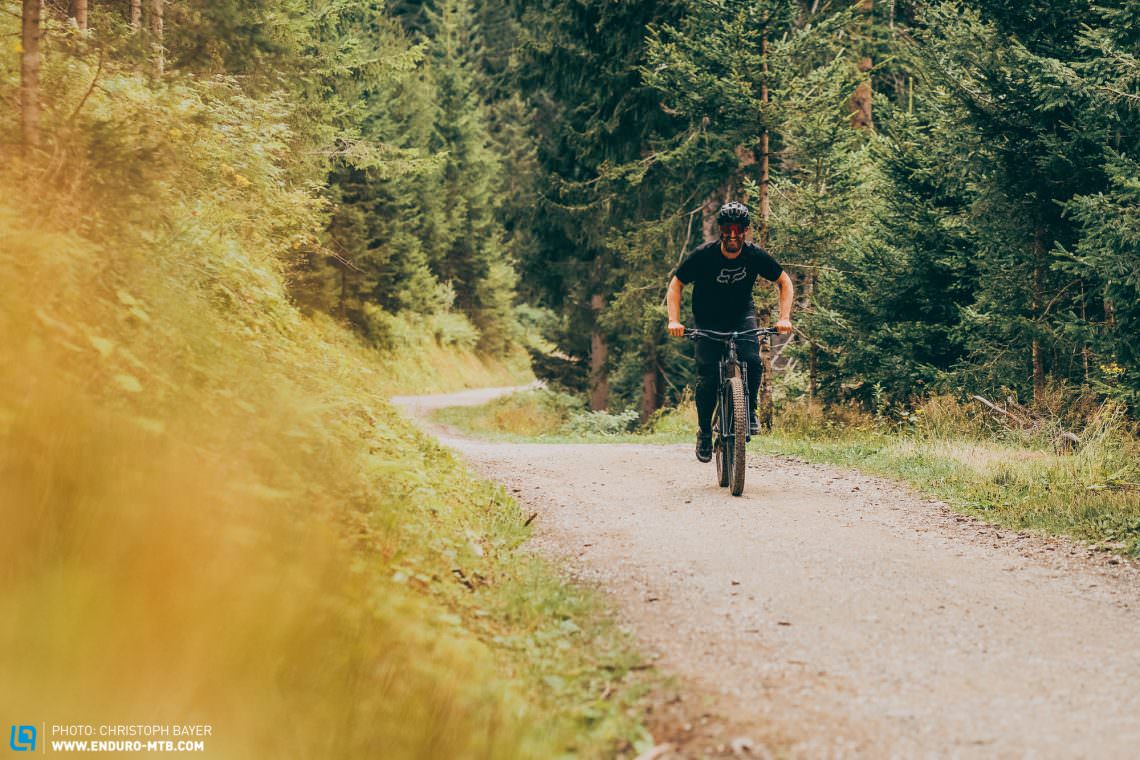
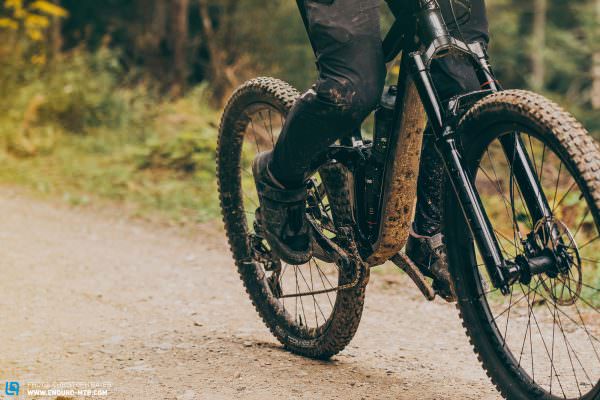
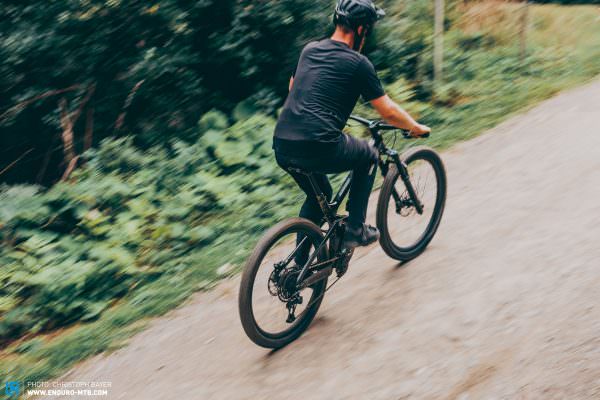

Let’s be honest – who would buy a Trek Slash for its climbing prowess? If climbing is your thing, you should perhaps take a closer look at the Fuel EX instead. Where the Slash has to deliver is on the descents and once you drop the saddle, you’ll immediately feel that you’re dealing with a completely different beast. While the previous Slash was more reminiscent of a modern, long-travel trail bike with its rather firm suspension and compact geometry, there’s no denying what the new bike was designed for. The suspension responds a lot more sensitively and literally sticks to the ground. The added reach gives you lots of freedom of movement and you’ll feel much more integrated into the 2021 Slash than on the predecessor. When the descents get steep and technical, the bike’s length keeps it very composed, holding its line and generating a lot of traction. Provided that you replace the SE4 rear tire, because it doesn’t do justice to the new Slash in any situation except for its low rolling resistance. On demanding terrain, there is room for improvement with the small 180 mm rear rotor as the SRAM CODE RSC brakes tend to fade quickly. This bike requires at least a 200 mm rotor and is even approved for up to 220 mm versions – excellent!
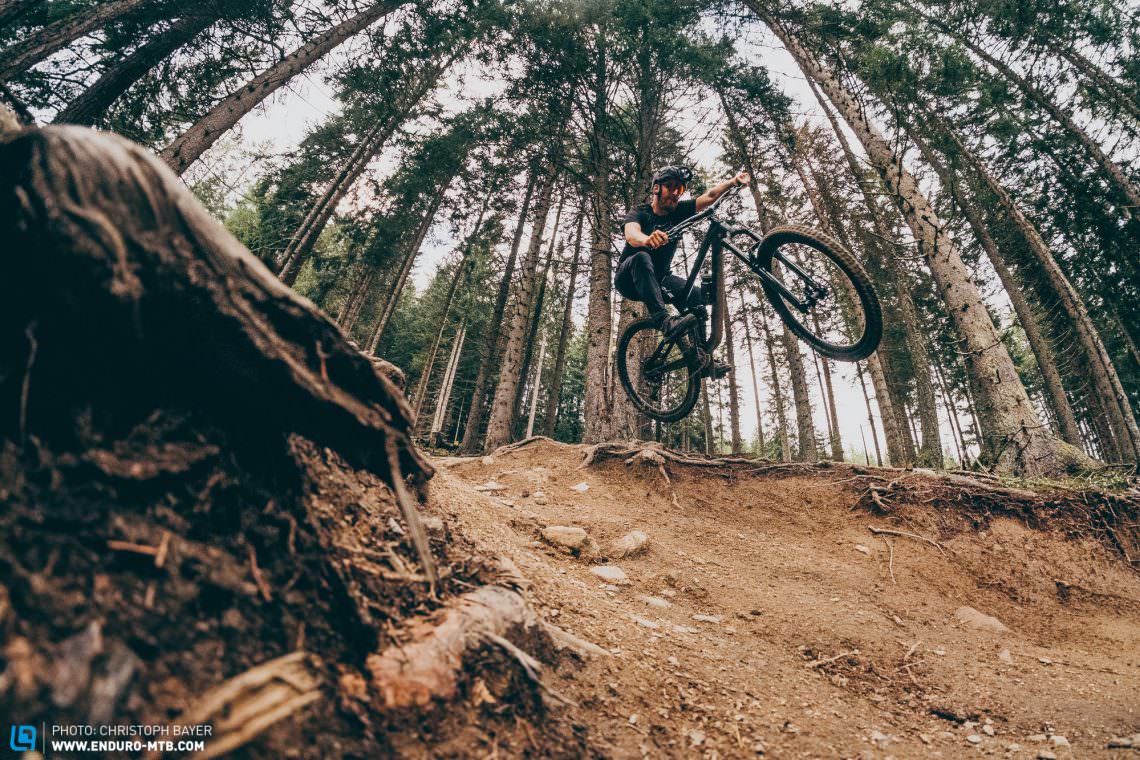
Just pull up – the Slash easily copes with botched landings!
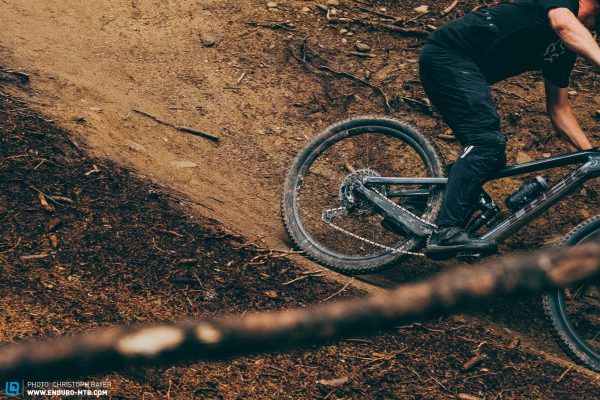
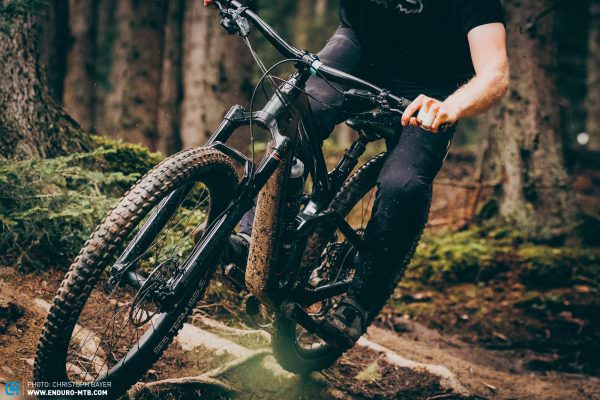
The rear end of the Slash performs sensitively with just the right amount of progression towards the end-stroke, but we got the impression that it gives up its travel to readily in the medium compression setting, making it wallow slightly in the mid-stroke. The shock offers enough support through compressions, but it’s a little wallowy in general. Installing three volume spacers didn’t do anything to help. We tried different sag settings between 25 and 30%, finding the sweet spot at around 28%. In combination with the long 485 mm reach and the compact 437 mm rear end, the Slash demands a very committed riding style through corners and for quick direction changes. If you don’t get actively involved, you’ll find yourself hanging off the back of the bike and lacking grip on the front wheel. If you set the compression lever on the shock to the plus, the bike offers more support. However, we would only recommend this setting for flow trails as it comes at the expense of small bump sensitivity as soon as you take on more natural trails. We would have liked to be able to fine-tune the shock more. If you’re not sure about the frame size, we recommend sizing down. Looking back, the ML Slash would have been a better option than the L for a rider height of around 180 cm.
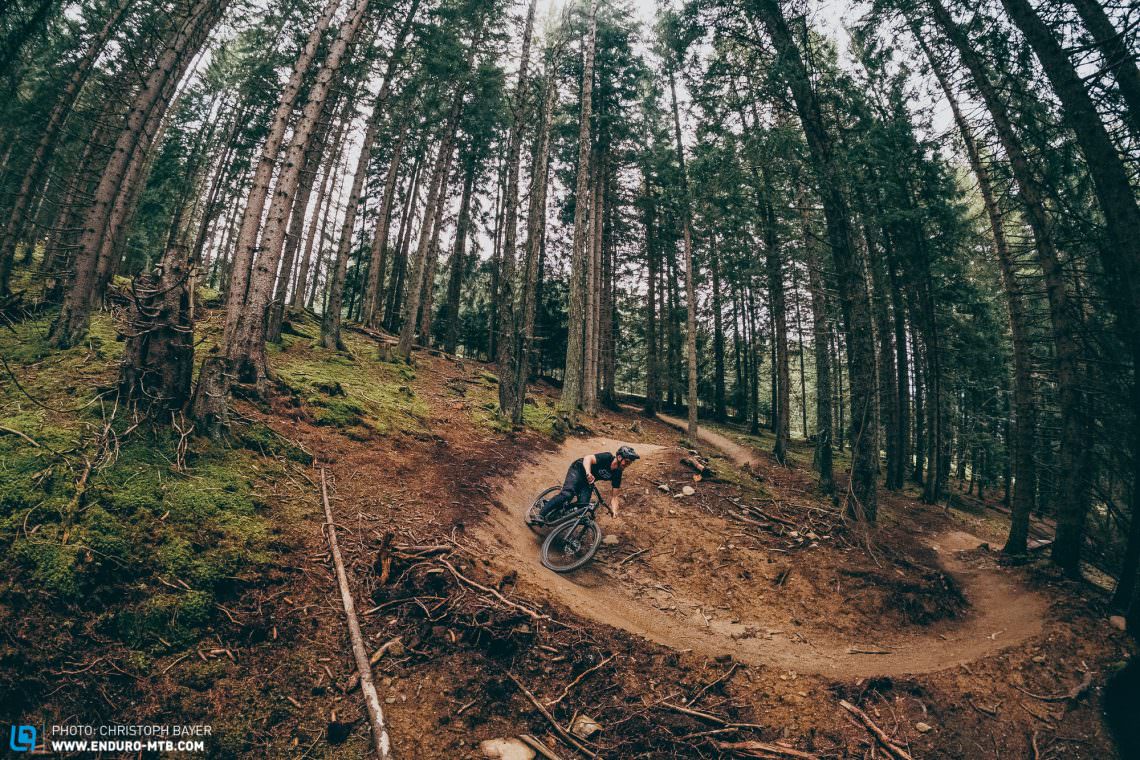


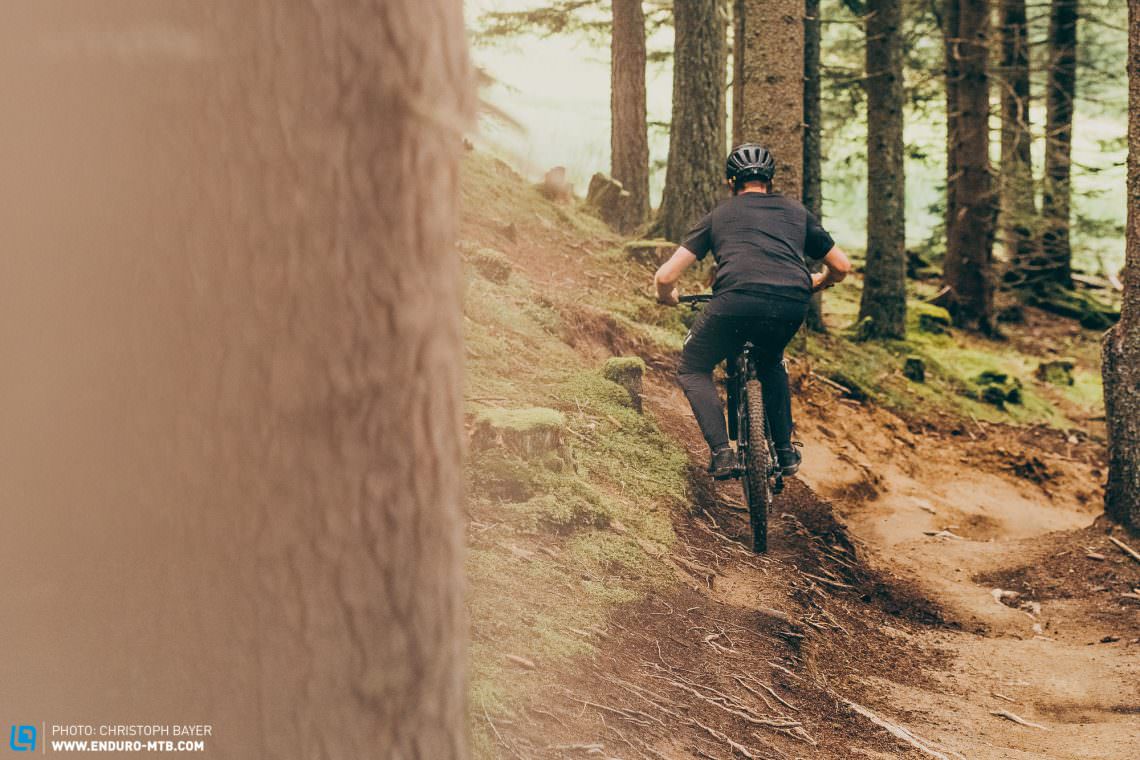
What else did we notice while testing?
The handling of a bike is key, but there are a few other factors that are important to consider before buying a new bike. One feature that makes the Slash so attractive for many enduro riders is the additional storage compartment in the down tube. You can use it to store a tube, an energy bar, a pump or simply a packet of gummy bears. Specialized were the first brand to offer this feature on their carbon bikes. Compared to the opening on the current Specialized Enduro, that of the Slash is smaller, but the latch is easier and quicker to open.

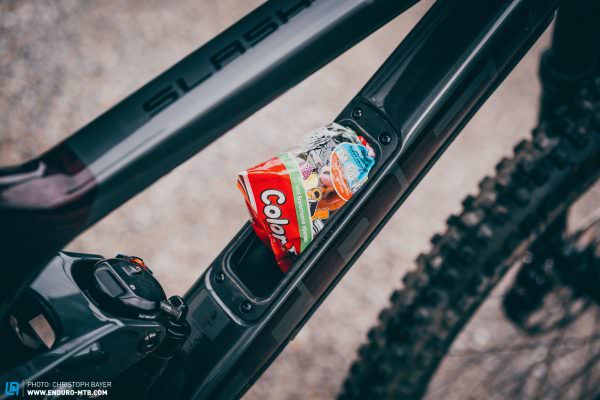

Tuning-Tipps: choose a smaller frame if necessary | larger brake rotor at the rear | Swap tires for a grippier, more robust model
There are a few other things we noticed during our test. Unfortunately, the rubber stopper that allows the thru shaft shock to fully compress came loose. It to be fumbled out of the frame. The shaft had also slightly damaged the housing of the shifter cable – no drama, but annoying. Last but not least, the Bontrager Line Elite carbon rims didn’t survive the test unscathed. While riding, we couldn’t remember encountering any hard impacts and the tires were always inflated to the correct pressure, but the rim wall delaminated from the bed. As a result, the tubeless tire would no longer stay inflated.
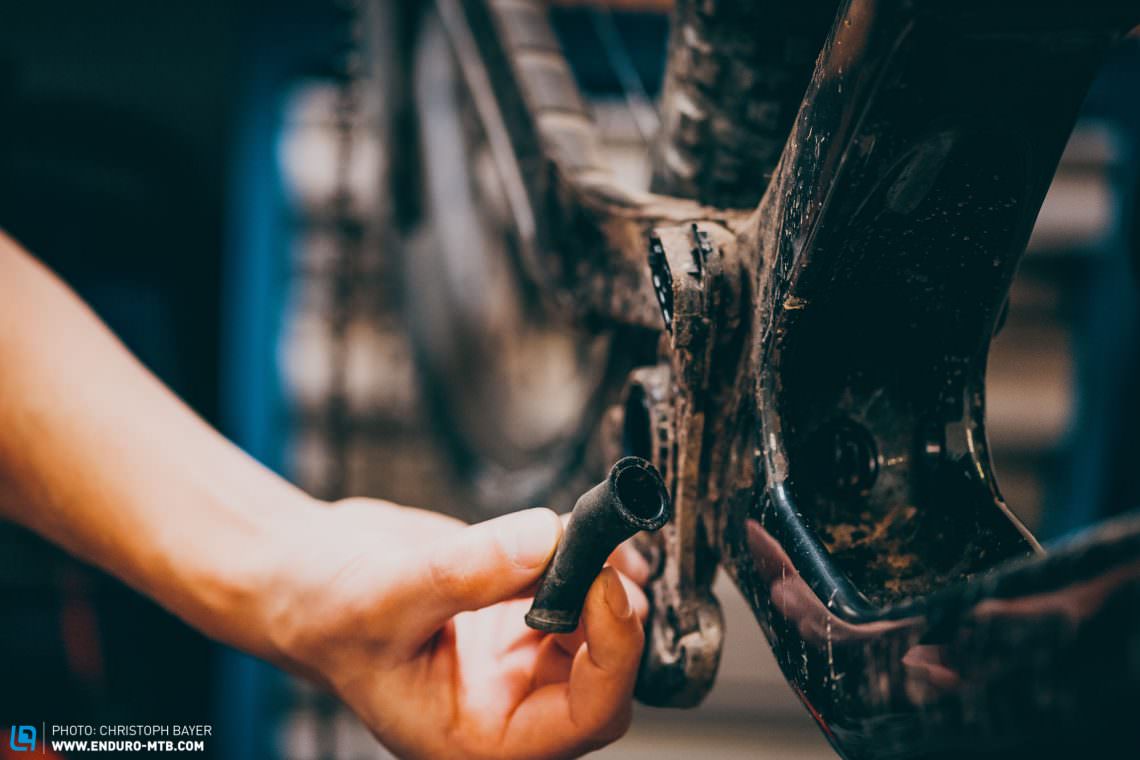
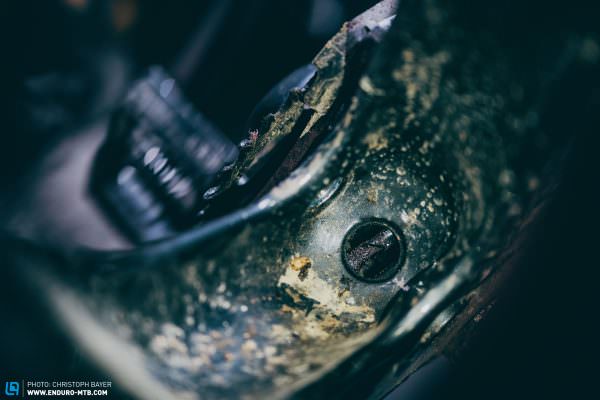
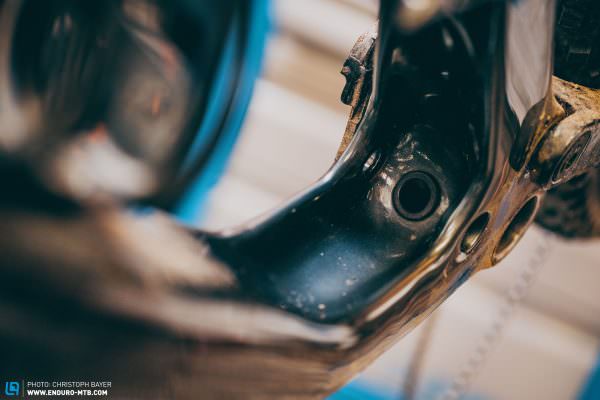
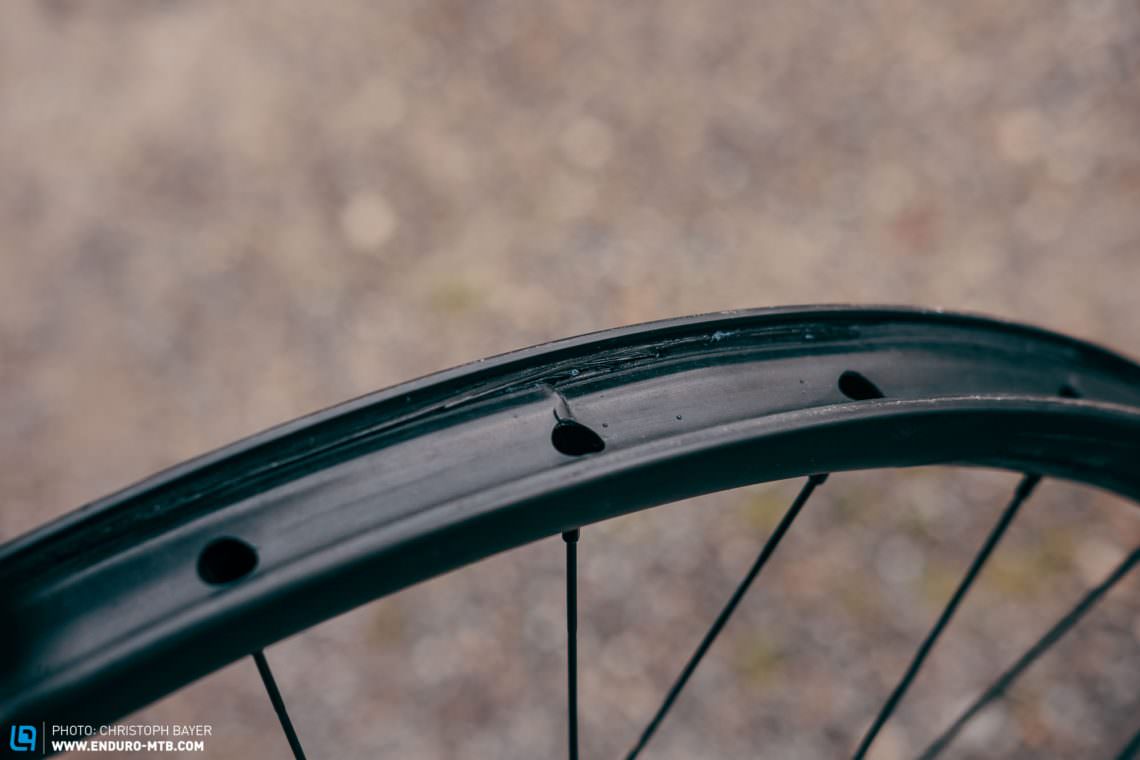
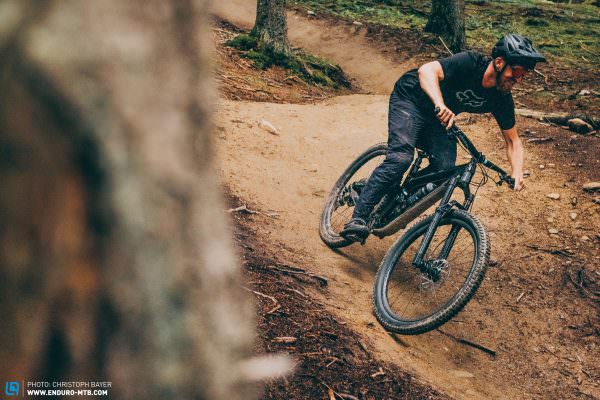
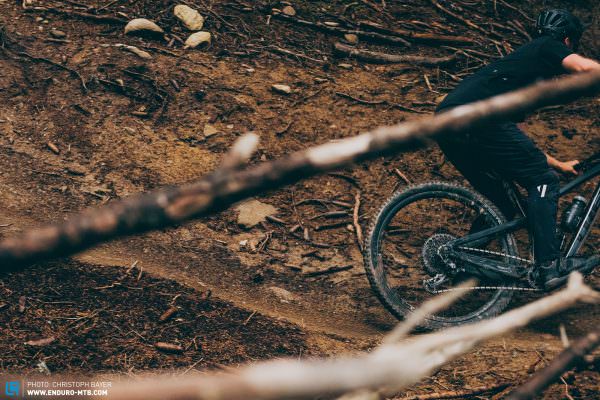
Our conclusion on the new 2021 Trek Slash
With a series of updates, Trek aim to put the Slash back on the podium. Thanks to its plush suspension and capable geometry, it’s ready to take on the most demanding trails. The integration of the storage compartment, the comeback of the threaded BSA BB and the longer dropper post are great. However, there’s little innovation and the unsuitable tires, the small brake rotor, the still slack seat tube angle and the lack of adjustability on the rear shock cloud the otherwise positive impression of the 2021 Trek Slash 9.9 X01.
Tops
- plush suspension
- practical storage compartment in the down tube (also on the aluminium frame)
- composed handling in rough terrain
- beautiful paint job
- additional ML frame size for the perfect fit
Flops
- unbalanced in flat and open corners
- minimal adjustment options on the rear shock
- tires and small rear brake rotor don't do the bike justice
More infos on trekbikes.com
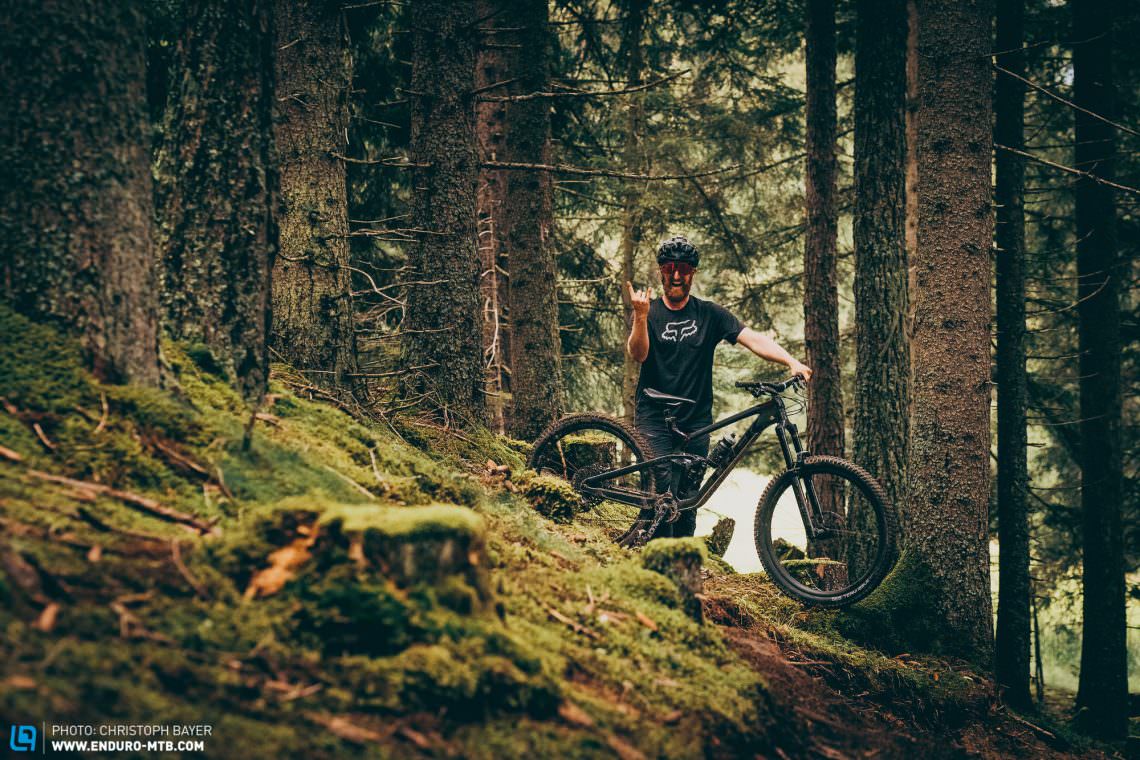
Did you enjoy this article? If so, we would be stoked if you decide to support us with a monthly contribution. By becoming a supporter of ENDURO, you will help secure a sustainable future for high-quality mountain bike journalism. Click here to learn more.
Words & Photos:









